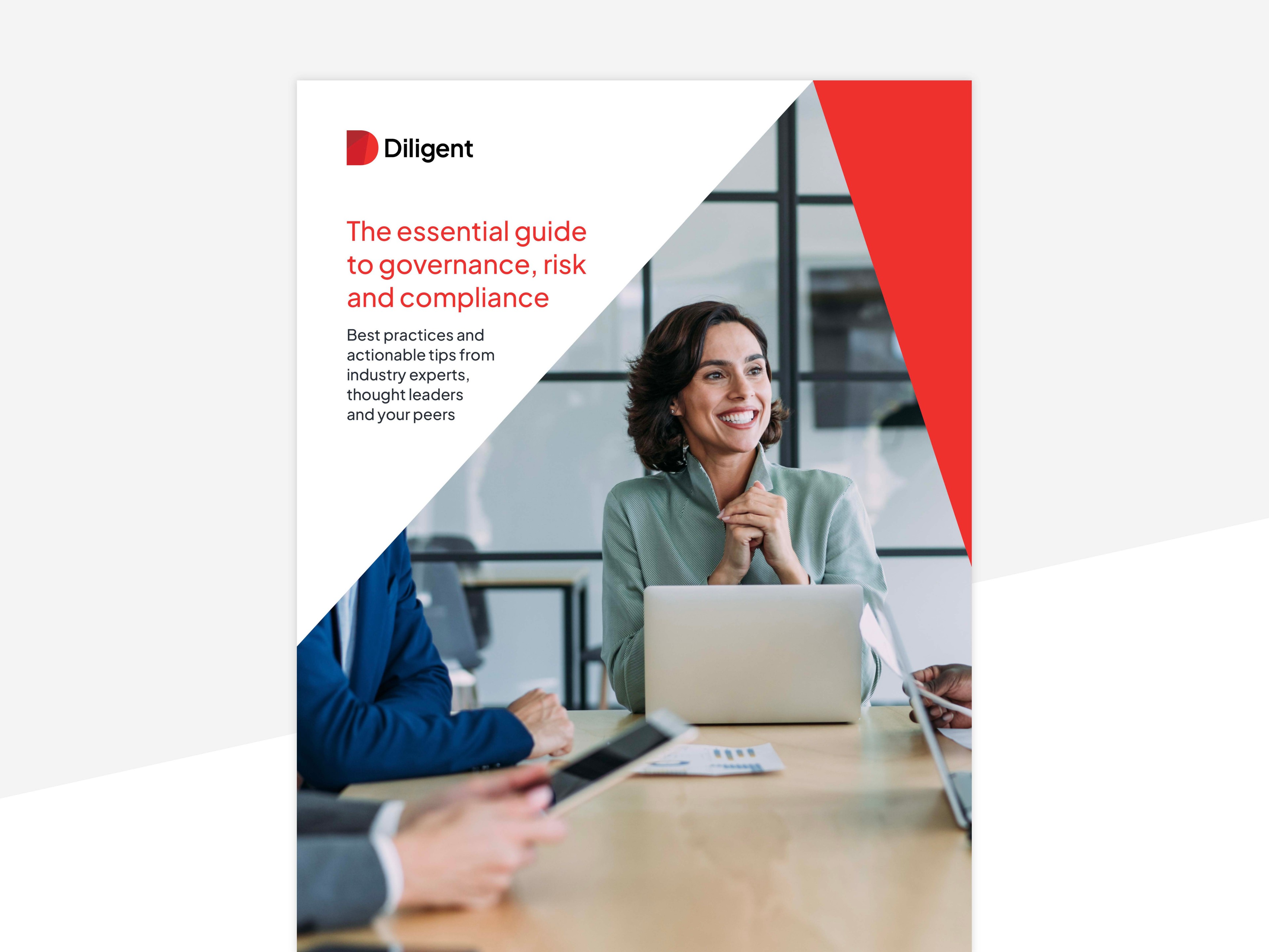Trump 2.0: Navigating a new crossroads of risk and governance

The re-election of Donald Trump as US president has signaled a bold appetite for change among American voters, ushering in a new era of uncertainty — and potential opportunity — for businesses worldwide.
Amid the many outstanding questions brought by the reality of a second Trump administration, boards of directors and executive leadership across the United States (and further afield) have been left asking since Election Day: What does this mean for corporate governance?
In this piece, we explore lessons learned from Trump’s first term and examine the latest commentary and analysis offering insights into what may lie ahead for 2025 and beyond.
Deregulation and the temptation to decrease oversight
Will compliance pressures ease under the new administration? The short answer is most likely yes. The longer answer gets a bit more complicated.
Post-election coverage from Thomson Reuters pointed out that deregulation would be a key theme of the second Trump presidency, affecting sectors from energy to finance. This might spur short-term economic growth by reducing compliance costs for businesses.
This continues an overarching mission of stimulating economic activity. Trump’s 2017 Tax Cuts and Jobs Act dramatically lowered the corporate tax rate and included several other business incentives. Plans for the second term include even more tax cuts along with reduced regulation in sectors from energy to housing.
Greater operational freedom brings great opportunity — and responsibility. Amid strong corporate growth, robust governance is more important than ever, regardless of regulatory mandates and reporting obligations.
“When companies grow rapidly, it is not unusual for compliance and other foundational services to lag while the company realigns its core support structures,” Linnea Deeds of Braumiller Law Group noted, offering a cautionary tale. She cites the example of a freight and logistics firm which grew aggressively through acquisitions — nearly 600 companies in all. Yet compliance programs and oversight didn’t keep pace. Illegal shipments to sanctioned countries slipped through the cracks, resulting in penalties totaling in the hundreds of millions.
Watch for diverging mandates and rising expectations in ESG
As for ESG, the complexities businesses face today are likely to intensify in the coming years. Let’s start with the environment. Trump is expected to roll back climate-related disclosure rules and undermine the ability of federal agencies to regulate, according to Morningstar Indexes’ Head of ESG Strategy, Tom Kuh. Meanwhile, global regulatory bodies are imposing stricter mandates, as seen in developments related to the Corporate Sustainability Reporting Directive (CSRD) and other frameworks. This diverging regulatory landscape between the U.S. and global markets, especially the EU’s increased emphasis on ESG and sustainability standards, will likely create a heightened level of complexity and pressure for U.S.-based multinationals.
As for social issues, organizations are already facing legal action targeting DEI activities. In October, the Equal Protection Project (EPP) filed a civil rights complaint alleging that Santa Clara University’s Black Corporate Board Readiness Program violates federal law by only accepting Black applicants.
Look for continued rollbacks in the months ahead. “Trump’s allies have reportedly prepared an executive order for the president to sign on day one, which would ‘eliminate programs that promote diversity, equity, and inclusion [DEI],’” Harvard Business Review reported.
As policymakers reverse focus on ESG’s E and S, expectations are rising for the G, governance, on two other fronts: employees/labor movements and shareholder activists.
“Recent years have seen an uptick in labor activity, including high-profile corporate organizing campaigns and significant strikes,” noted Boards & Directors magazine. “Whether their workforces are unionized or not, public company boards must understand the current labor movement.”
Looking at activist investors, many had highly profitable years during the last Trump presidency. Global law firm Sidley pointed out that Trump’s deregulation intentions for 2025, plus plans for government efficiency commission, are a “prospect that excites many shareholder activists.”
While both these groups are widely different in terms of motivations and goals, they share one commonality: they’ll both be keeping a close eye on corporate governance and will have little tolerance for lowered or lapsed standards.
The chain reaction of Chinese tariffs
Boards and other corporate leaders need to be ready for a further surge in complexity if Trump carries out his plan to impose massive tariffs on Chinese imports — some sources predict tariffs as high as 60% – 100%. Companies across industries are already bracing for the impact, with Trump’s 2018 tariffs still fresh in their memories.
“The proposed tariffs would have a significant and detrimental impact on the costs of a wide range of consumer products sold in the United States, particularly on products where China is the major supplier,” the National Retail Federation reported.
“Despite rapid and recent progress in U.S. onshoring, China currently controls over 80 percent of certain segments of the EV battery supply chain, particularly upstream nodes such as critical minerals mining, processing, and refining,” The Hill also pointed out.
For companies who depend on Chinese suppliers, tariffs and other trade policies will demand constant, rigorous oversight, followed by swift, effective adaptation across the organization.
Due diligence for suppliers, mergers and acquisitions will rise to the fore. Another area, entity management, is already a notably complicated business, with many organizations overseeing hundreds of subsidiaries, offices and divisions worldwide andnew requirements like beneficial ownership reporting upping the ante for continuous monitoring, reporting and disclosure.
The bottom line: Best-practice governance is more important than ever
In short, corporations will have a lot to manage under the new U.S. presidential administration: ESG complexities, growth opportunities, rising activism, supply chain adjustments, and more.
Forthcoming research from the Diligent Institute’s What Directors Think report indicates that U.S. public company directors are prioritizing growth strategy as a key focus for 2025. Robust governance is essential to support this strategic direction, helping organizations manage risk, adapt to change, remain resilient, and meet investor expectations.
A comprehensive governance platform can enable boards to navigate these challenges effectively, putting best practices at their fingertips with:
- Real-time dashboards that deliver an end-to-end view of risks and opportunities
- AI-driven tools that help boards work faster and make sharper, more agile decisions
- Regulatory templates that align organizational strategy with the evolving policy landscape
The Diligent One Platform delivers all of this and more, equipping boards and executives with the tools needed to align governance practices with organizational growth strategies. Schedule a demo today.
More to explore

The essential guide to governance, risk and compliance
Start getting more done in less time and build organisational resilience using our essential guide to GRC, packed with actionable tips and best practices.

Strong leadership starts at the top: 10 steps for building a better board
Strong leadership starts at the top. This 10-step guide explains how to lay the foundations for a high-performing corporate board.

16 board management best practices to adopt for 2025
Discover 16 board management best practices that will position you strongly to tackle the challenges of 2025 and beyond.